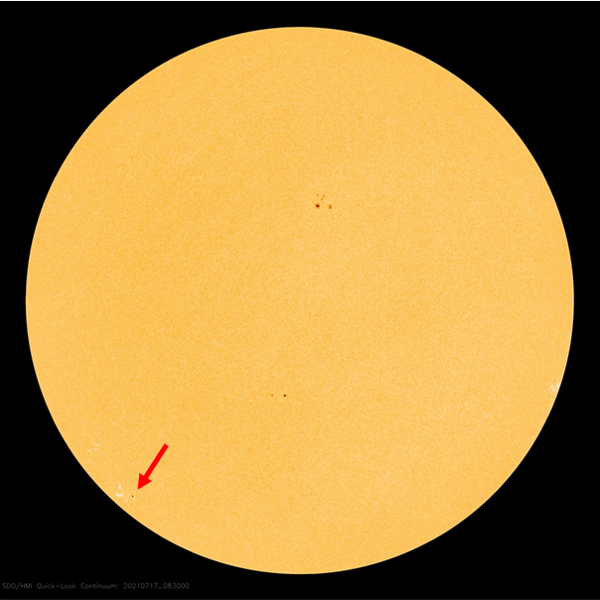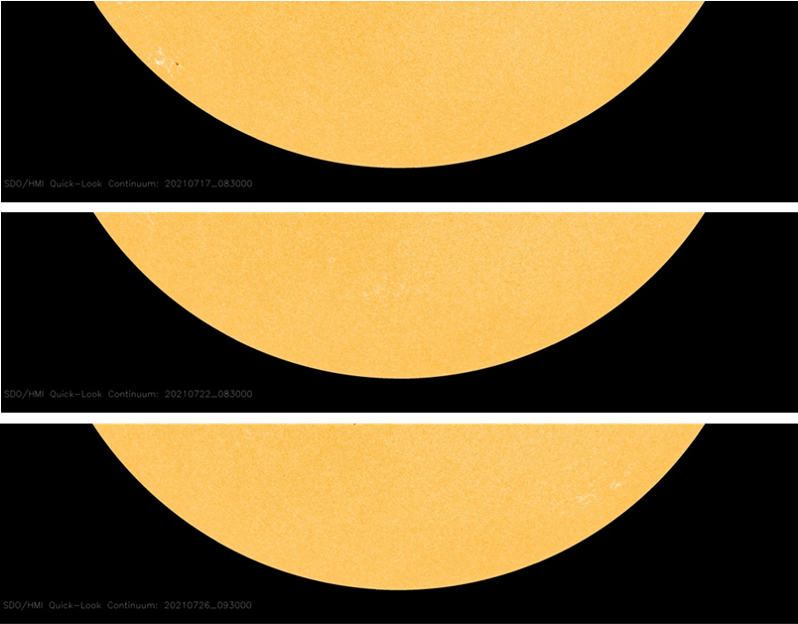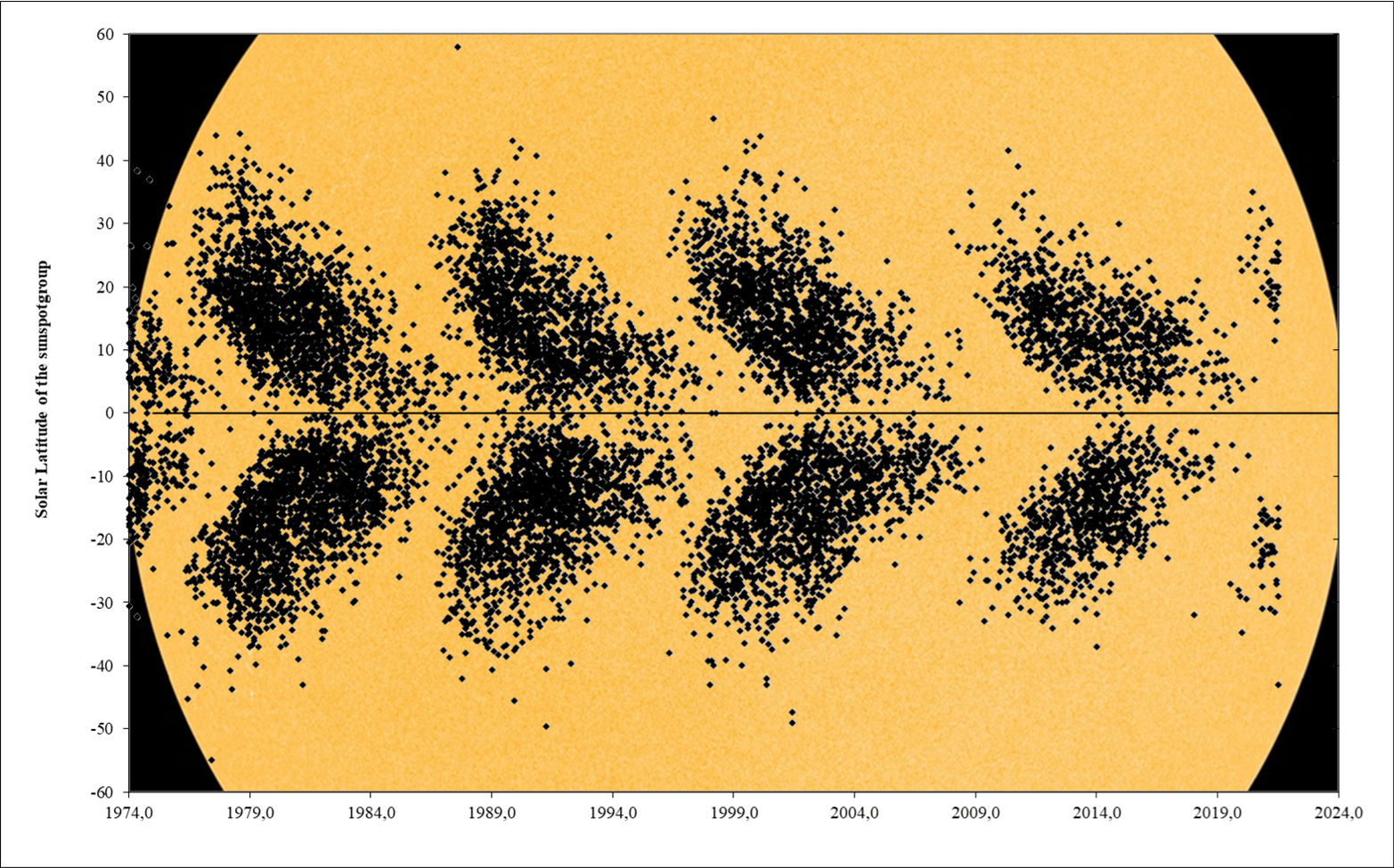From 16 till 18 July, a sunspot was visible near the southeast solar limb at the very high southern latitude of -43 degrees. NOAA 2844 was a quiet and magnetically simple region, and the first region of the new solar cycle 25 of which the latitude exceeded 40 degrees. In the SDO/HMI image dated 17 July (08:30UT) underneath, the position of the small speck is indicated by the red arrow. The previous sunspot group with such a high latitude (+42 degrees) was NOAA 11069 in May 2010, which produced even an M-class flare (see the STCE annual highlights compilation 2010).

After the sunspot had decayed, the active region continued to transit the solar disk as a spotless faculae field. This is visible in the SDO/HMI images underneath dating from 17, 22 and 26 July, with the faculae field visible as an area that is somewhat brighter than the surrounding solar surface. This is indicative of the presence of enhanced magnetic fields, but not strong enough (anymore) to support a sunspot.

Most sunspot groups appear in the main zone, i.e. a belt from 30 degrees north to 30 degrees south of the solar equator. Sunspot groups with latitudes in excess of 40 degrees are very rare. Since 1976, about 12.000 sunspot groups have been numbered by NOAA, but only 35 groups reached latitudes over 40 degrees. Sunspot regions with latitudes of more than 50 degrees are even rarer, with only 2 such regions observed since 1976: one in June 1977 (NOAA 831 at -55 degrees), and the other one in August 1987 (NOAA 4838 at +58 degrees). These outliers can be seen in the Butterfly diagram underneath (1974-present) showing per month the latitude of each sunspot group (see this STCE Newsitem for more info on such diagrams).






